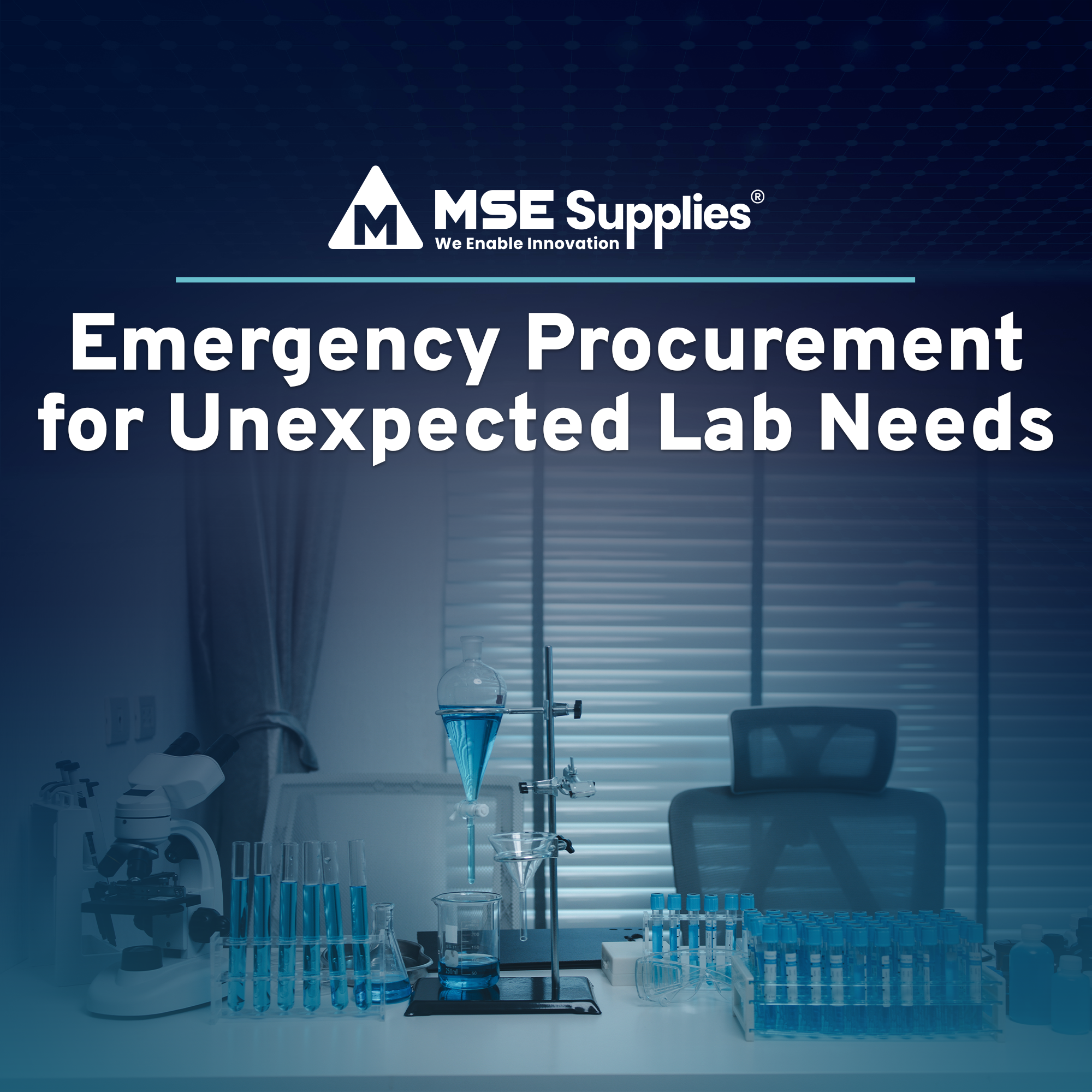Cleaner Iron Extraction with Electrochemistry
Posted by Marketing Team on
 The steel industry is a major contributor to greenhouse gas emissions, making up about 7–9% of all emissions worldwide. Conventional iron extraction, which burns coal to operate blast furnaces, is largely responsible for this impact. With increasing demand for decarbonization, industries are seeking new ways to reduce their environmental impact while maintaining high production levels.
The steel industry is a major contributor to greenhouse gas emissions, making up about 7–9% of all emissions worldwide. Conventional iron extraction, which burns coal to operate blast furnaces, is largely responsible for this impact. With increasing demand for decarbonization, industries are seeking new ways to reduce their environmental impact while maintaining high production levels.
A recent publication in ACS Energy Letters shares a cleaner idea: using an electrochemical method to obtain iron from artificial ores at low-temperature settings. The technique not only reduces emissions but may also be cost-competitive with current industrial processes.
Electrochemistry and Iron Reduction
Researchers found that both α-Fe₂O₃ and γ-Fe₂O₃ iron(III) oxide particles could be reduced to elemental iron by being immersed in an aqueous sodium hydroxide (NaOH) solution. This electrochemical reaction occurs at relatively low temperatures (80–90°C), in stark contrast to traditional high-temperature furnace operations.
They noted that operating under alkaline conditions significantly enhances the current efficiencies and faradaic efficiency of the process, while minimizing unwanted side reactions such as the hydrogen evolution reaction.
The significance lies in the method’s ability to produce metallic iron without direct carbon emissions, offering a cleaner pathway that aligns with net-zero emission goals. As a controlled and efficient approach, this technique represents a substantial advancement in the reduction of iron oxides for sustainable metallurgical applications.
How the Study Was Conducted
Researchers found that both α-Fe₂O₃ and γ-Fe₂O₃ iron(III) oxide particles could be reduced to elemental iron by being immersed in an aqueous sodium hydroxide (NaOH) solution. This electrochemical reaction occurs at relatively low temperatures (80–90°C), in stark contrast to traditional high-temperature furnace operations.
They noted that operating under alkaline conditions significantly enhances the current efficiencies and faradaic efficiency of the process, while minimizing unwanted side reactions such as the hydrogen evolution reaction.
The significance lies in the method’s ability to produce metallic iron without direct carbon emissions, offering a cleaner pathway that aligns with net-zero emission goals. As a controlled and efficient approach, this technique represents a substantial advancement in the reduction of iron oxides for sustainable metallurgical applications.

Secondary electron SEM images of iron films grown at (a) −250 mA cm–2 from pc-Fe2O3, (b) −800 mA cm–2 from pc-Fe2O3, (c) −250 mA/cm2 from an-Fe2O3, and (d) −450 mA cm–2 from an-Fe2O3. Unreacted and partially reacted pc-Fe2O3 particles are visible as lighter contrast regions on crystalline Fe as confirmed via EDX, while unreacted and partially reacted an-Fe2O3 particles are visible as rounded regions in the top left of (c) and are not present in (d) (Supporting Information). (Konovalova et al., 2025)
Understanding Electrochemical Ironmaking
Unlike the traditional iron extraction industrial process which uses coke and very high temperatures over 1,500°C, electrochemical extraction happens at much lower temperatures and is less harmful to the environment. In alkaline conditions, an electric potential can be applied to bring about the change Fe³⁺ to Fe⁰.
The researchers highlight that the cathodic compartment and electrolysis conditions—particularly alkaline versus acidic conditions—play a crucial role in maximizing efficiency and minimizing hydrogen overpotential.
Such processes are scalable and, if powered by renewable electricity, present a realistic path toward sustainable metallurgy. Most importantly, by excluding carbon-based reducing agents, CO₂ emissions are prevented which helps BTR differ from blast furnaces and hydrogen-based DRI.
Supporting Sustainable Metallurgy Research
We provide the necessary supplies and equipment here at MSE Supplies that match the approaches in this study and help move ironmaking toward a cleaner future.
MSE Supplies provides iron powders such as α-Fe₂O₃ (hematite) and γ-Fe₂O₃ (maghemite) powders which are both used in this experiment. Strict control of both particle size and purity makes it possible for researchers to study how different morphologies, porosity and the effectiveness of reduction affect electrochemical systems.
We have a wide range of electrochemical cells, electrodes and all the required accessories for carrying out reduction and deposition investigations. No matter if you require help with electrolyte selection, electrode type or the way the cell is put together, MSE Supplies custom-made solutions for both research and development stages.
Precise characterization is essential for tracking changes in iron valence, morphology, and structural transformation. Our analytical services, including X-ray diffraction (XRD), scanning electron microscopy (SEM), and chemical composition analysis, provide valuable insights for researchers developing next-generation metallurgical technologies, including studies involving conductive oxides and iron-rich solutions.

Electrochemical iron extraction is a major advance in helping the global effort to cut down carbon emissions from the steel industry. Aiming for less energy use, not depending on fossil fuels and competitive costs could give a new direction to ironmaking.
As researchers continue to refine electrolysis conditions and investigate the role of properties of water, bulk energy, and anion passage in iron-rich alloy formation, access to high-quality materials and precise analytical services becomes increasingly important. With the right materials, tools, and support, researchers can accelerate the transition to cleaner industrial processes—and MSE Supplies is committed to providing exactly that.
Get involved in making material processing safer and more efficient. MSE Supplies ensures the industry has the necessary supplies, equipment and services to innovate in sustainable metallurgy. Follow MSE Supplies on LinkedIn and subscribe to our newsletter for expert insights, product innovations, and tailored support for advanced research in electrochemical technologies.
Source:
-
A step toward cleaner iron extraction using electricity - American Chemical Society. (n.d.). American Chemical Society. Retrieved June 2, 2025, from https://www.acs.org/pressroom/presspacs/2025/april/a-step-toward-cleaner-iron-extraction-using-electricity.html
-
Konovalova, A., Goldman, A. C., Shekhar, R., Triplett, I., Moutarlier, L. J., Kwak, M., & Kempler, P. A. (2025). Pathways to electrochemical ironmaking at scale via the direct reduction of FE2O3. ACS Energy Letters, 1851–1857. https://doi.org/10.1021/acsenergylett.5c00166



